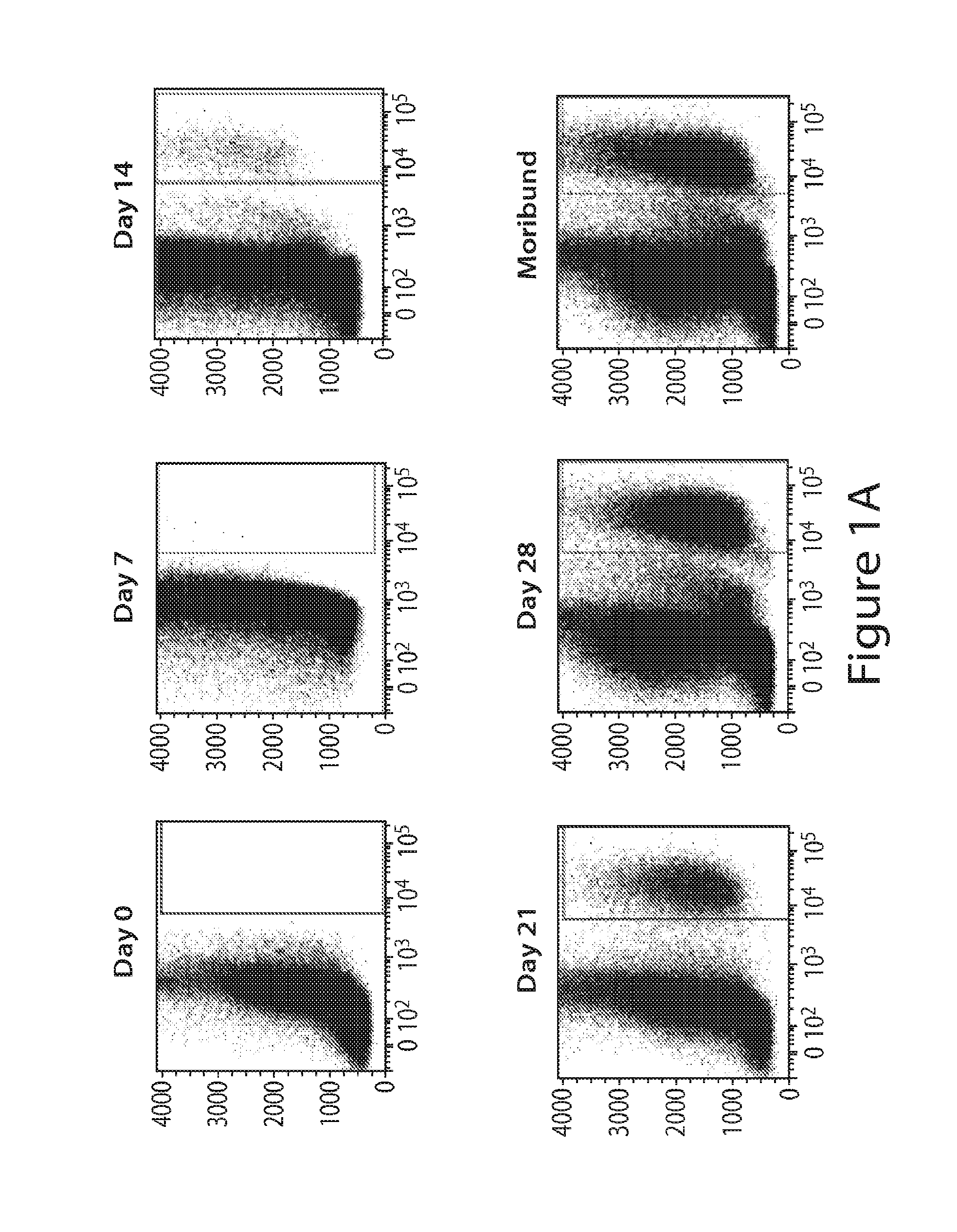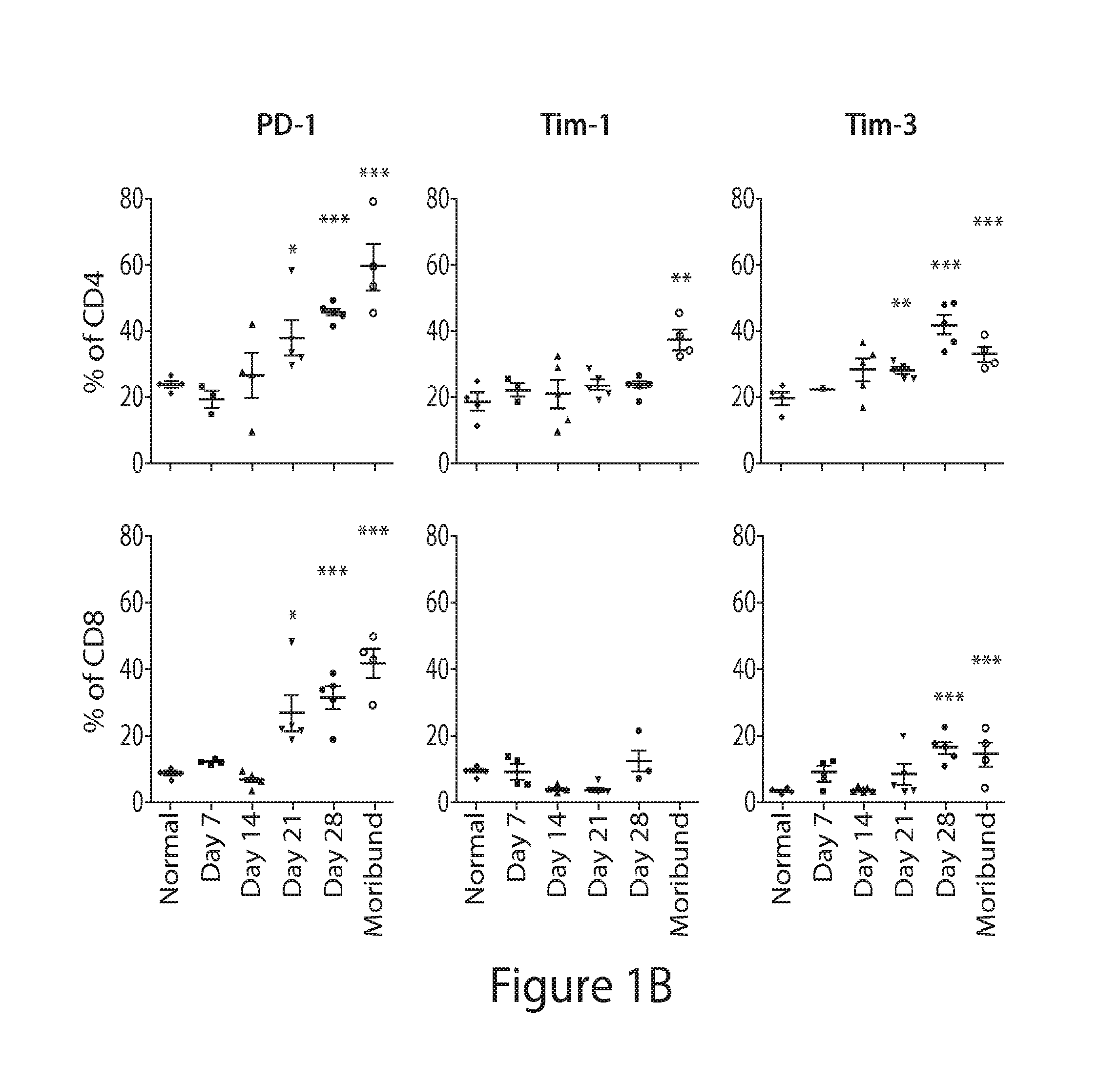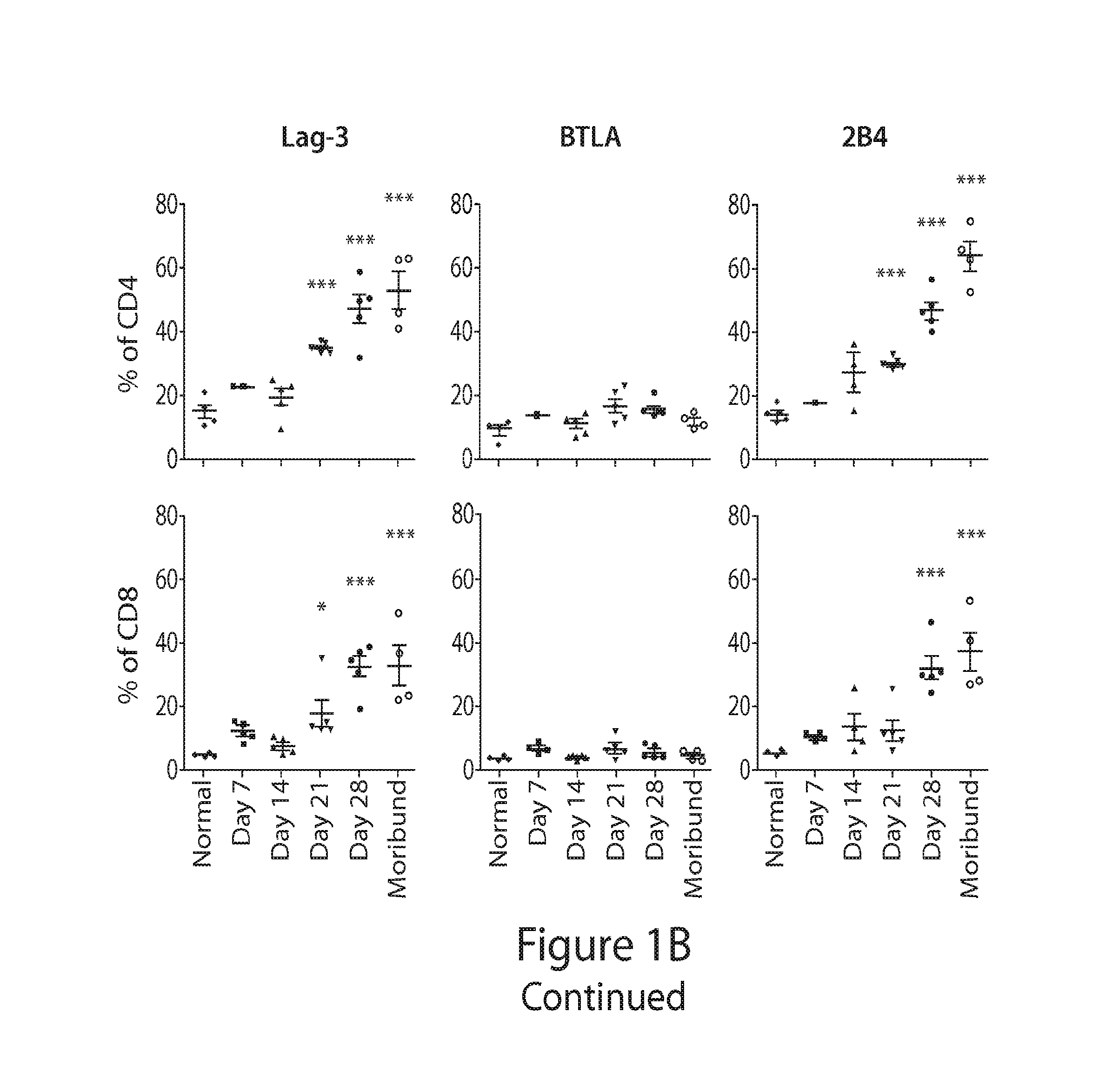Methods for treating hematologic cancers
- Summary
- Abstract
- Description
- Claims
- Application Information
AI Technical Summary
Benefits of technology
Problems solved by technology
Method used
Image
Examples
example 1
Combined PD-L1 and TIM-3 Blockade as Immunotherapy for Hematologic Cancers
[0276]a. Materials and Methods
[0277]Mice
[0278]All mice were housed in the Medical College of Wisconsin Biomedical Resource Center, an AAALAC-accredited facility. C47BL6 / KaLwRij mice were used in the experiments. All animal work was reviewed and approved by the Medical College of Wisconsin Institutional Animal Care and Use Committee.
[0279]Tumor Cells
[0280]The 5T33 murine multiple myeloma (MM) cell line was derived from myeloma that spontaneously arose in a C57B1 / KaLwRij mouse (Radl et al. (1988) Am. J. Pathol. 132:593-597; and Manning et al. (1992) Br. J. Cancer 66:1088-1093). For experiments, 5T33 cells were thawed from a large frozen stock and cultured in RPMI 1640+10% fetal bovine serum for no longer than 2 weeks prior to inoculation of mice. Mice were inoculated with tumor as follows: 2×106 5 T33 cells intravenously (i.v.). 5T33-bearing mice were considered moribund and euthanized when they developed parapa...
example 2
Combined Immune Checkpoint Protein Blockade and Lymphodepletion as Immunotherapy for Hematologic Cancers
[0296]a. Materials and methods are essentially the same as described in Example 1 unless specifically indicated below in the “Results” section below.
[0297]b. Results
[0298]As shown in this Example, combined immune checkpoint protein blockade and lymphodepletion provide an effective immunotherapy for hematologic cancers such as myeloma.
Blocking of PD-L1 in Combination with Tim-3, Lag-3 or CTLA-4 after Lymphodepleting Whole Body Irradiation Synergistically Improved Survival
[0299]FIG. 9A depicts the experimental design. KaLwRij mice received 500 cGy irradiation 7 days after tumor cell inoculation. The treatment with blocking antibody or control IgG (200 μg i.p.) was initiated 5 days later and specifically given 12, 14, 19, 21, 26, and 28 days after tumor inoculation.
[0300]As shown in FIGS. 9B-9D, blocking PD-L1 in combination with Tim-3 (FIG. 9B), Lag-3 (FIG. 9B), or CTLA-4 (FIG. 9C) ...
PUM
| Property | Measurement | Unit |
|---|---|---|
| radioactive | aaaaa | aaaaa |
| frequency | aaaaa | aaaaa |
| frequencies | aaaaa | aaaaa |
Abstract
Description
Claims
Application Information
 Login to View More
Login to View More - R&D
- Intellectual Property
- Life Sciences
- Materials
- Tech Scout
- Unparalleled Data Quality
- Higher Quality Content
- 60% Fewer Hallucinations
Browse by: Latest US Patents, China's latest patents, Technical Efficacy Thesaurus, Application Domain, Technology Topic, Popular Technical Reports.
© 2025 PatSnap. All rights reserved.Legal|Privacy policy|Modern Slavery Act Transparency Statement|Sitemap|About US| Contact US: help@patsnap.com



